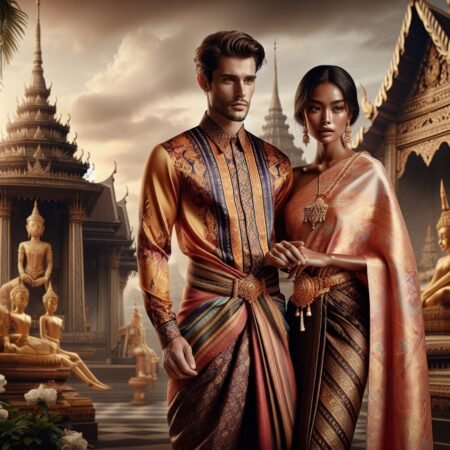
Introduction
Traditional Thai clothing, also known as Thai traditional costume or Thailand traditional dress, is a captivating reflection of the country’s rich cultural heritage. This article delves into the timeless elegance of Thai traditional attire, exploring its historical influences, regional variations, and contemporary relevance.
In this article, we will:
- Understand the cultural significance of traditional Thai clothing
- Explore the craftsmanship and style elements in women’s and men’s traditional clothing
- Learn about the evolution of Thai traditional clothing styles over time
- Discover the diversity of Thai textiles and designs across different regions
- Highlight the Queen Sirikit Museum of Textiles as an institution dedicated to preserving Thai textile arts
- Discuss efforts to make Thai traditional attire more sustainable and inclusive for modern wear
Are you ready to learn more about Thai traditional clothing? Let’s get started!
1. Women’s Traditional Clothing
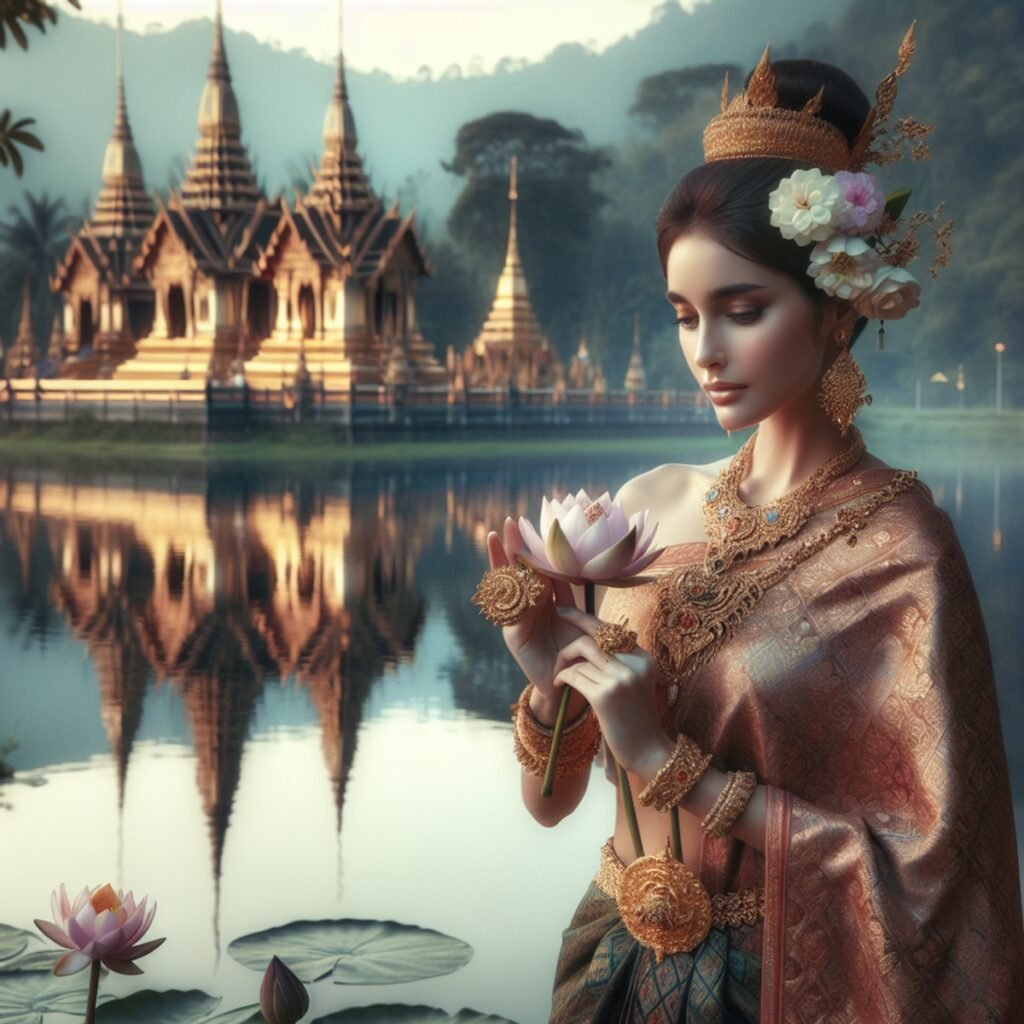
Traditional Thai clothing for women is a testament to the country’s rich cultural heritage, characterized by exquisite craftsmanship and elegant style elements. The ensemble typically includes the pha nung, chong kraben, blouse, and sabai. Each component holds significant cultural and aesthetic value:
- Pha Nung: This ankle-length tube skirt is skillfully draped around the lower body, creating graceful folds and pleats that exemplify the artistry of Thai textile traditions.
- Chong Kraben: An ornate belt worn around the waist, adding a regal touch to the attire with its intricate designs and embellishments.
- Blouse: It features colorful weaving and intricate patterns, showcasing the meticulous craftsmanship of traditional Thai textiles.
- Sabai: A shawl-like garment worn over the shoulder, adding an extra layer of elegance to the overall ensemble.
Women’s traditional attire plays a pivotal role in cultural celebrations and formal events. It is often styled differently based on the occasion, with vibrant colors and elaborate accessories adding a touch of sophistication. For instance, during religious ceremonies, women may wear a more modest and demure style, while vibrant and ornate ensembles are reserved for festive occasions.
The careful draping of pha nung and the detailed designs of chong kraben symbolize grace and refinement, making women’s traditional clothing a timeless representation of Thai cultural identity.
2. Men’s Traditional Clothing
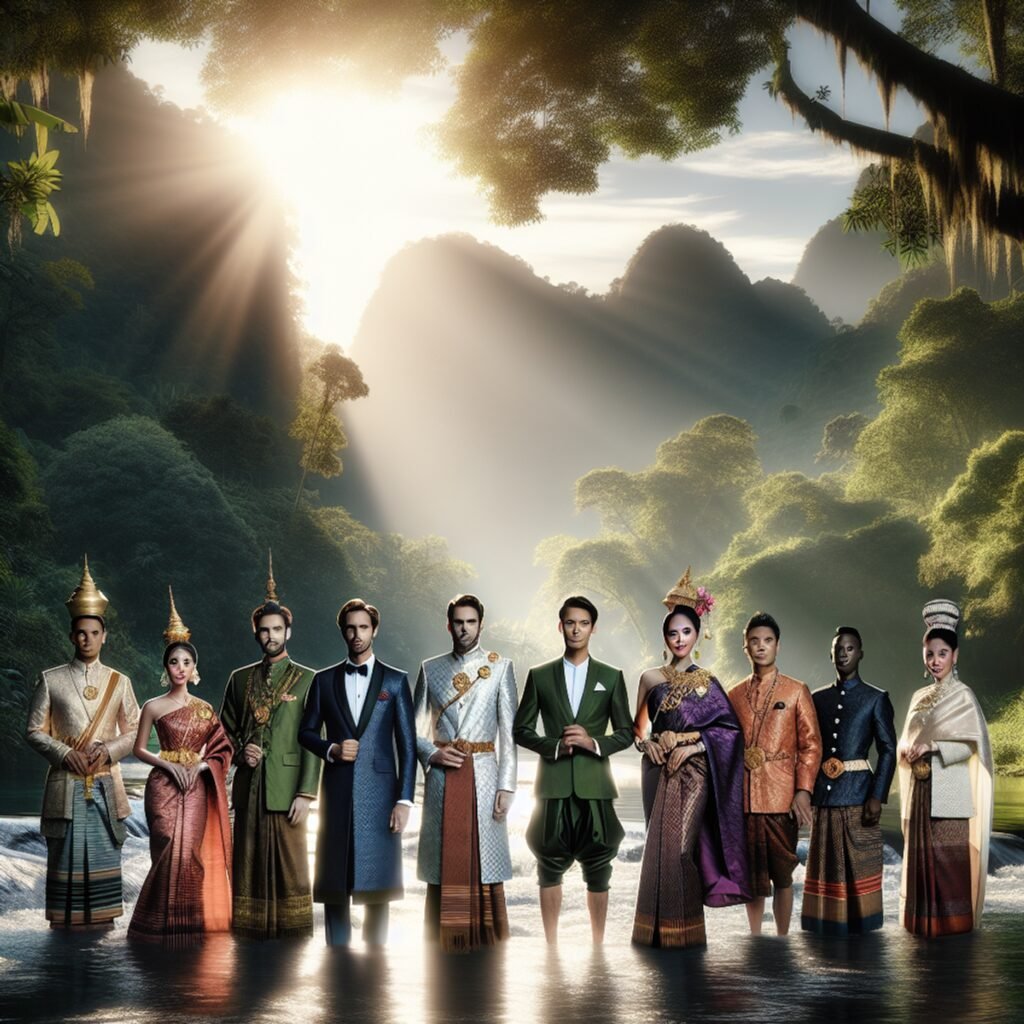
Men’s traditional Thai clothing combines royal beauty with practicality, featuring unique elements that have developed over time while staying true to its fashion heritage. Here are some important details about men’s traditional Thai clothing:
Suea Pat: The Traditional Thai Shirt
The suea pat is a type of shirt worn by Thai men as part of their traditional attire. It has the following characteristics:
- Collarless design with a front opening
- Often made from silk or cotton fabric
- Known for its intricate patterns, vibrant colors, and fine craftsmanship
One of the most iconic patterns found on suea pat shirts is the raj pattern, which showcases detailed designs inspired by nature, animals, and mythical creatures.
Pants: Comfortable and Stylish
For bottoms, men usually opt for loose-fitting pants known as “chakris.” These pants:
- Have wide legs
- Stop just below the knees
- Offer both comfort and freedom of movement, making them suitable for various occasions
Knee-length White Socks: A Classic Touch
To complete the ensemble, men traditionally wear knee-length white socks called “tabi” underneath their pants. These socks:
- Are made from cotton or silk
- Add an extra touch of elegance to the overall look
The evolution of men’s fashion in Thailand has seen the incorporation of modern elements while preserving the essence of traditional attire. Today, there are contemporary adaptations of men’s traditional clothing that cater to formal occasions and special events.
The timeless elegance of men’s traditional Thai clothing continues to inspire designers and fashion enthusiasts alike. Its rich history and cultural significance make it a symbol of pride for the Thai people. Whether it is worn during cultural celebrations or formal events, men’s traditional attire showcases the meticulous craftsmanship and attention to detail that has been passed down through generations.
3. Evolution of Traditional Thai Clothing Styles
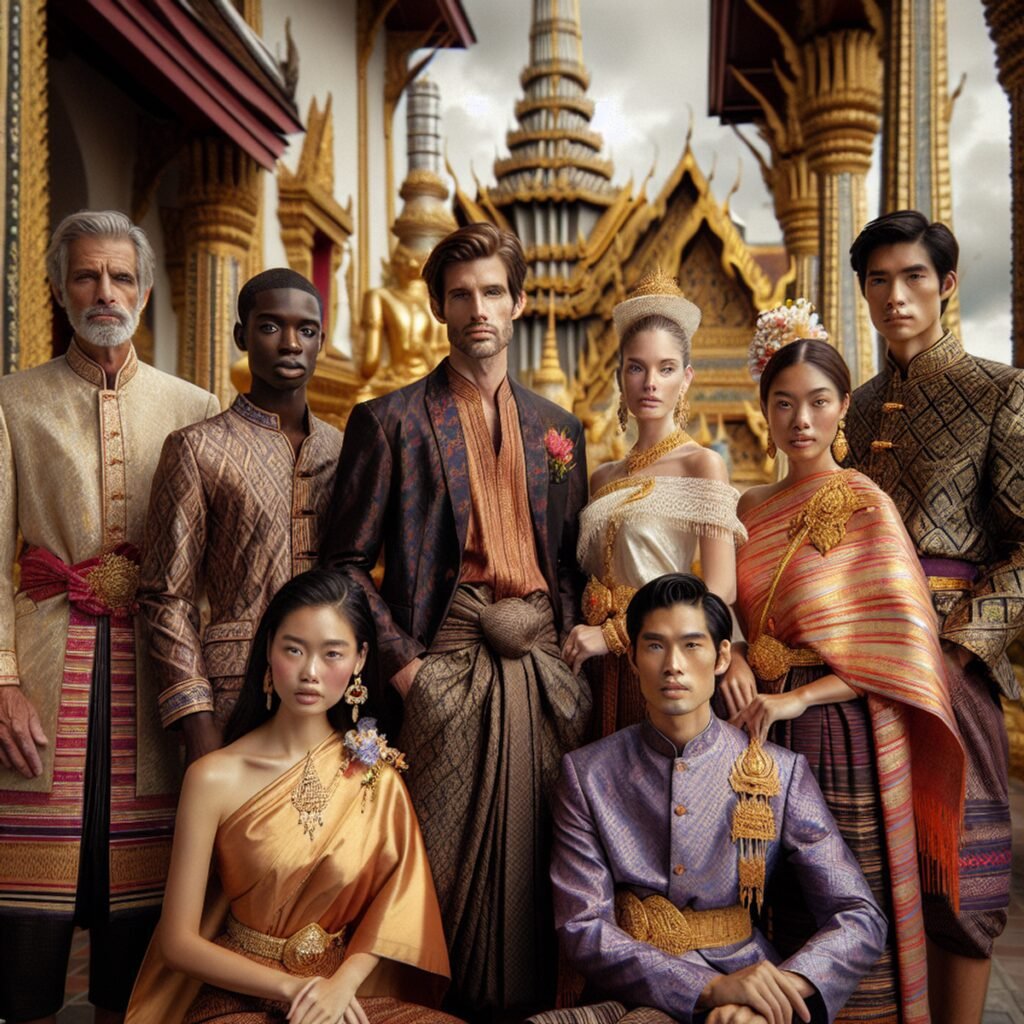
Traditional Thai attire has evolved over time, adapting to the needs and preferences of modern individuals while retaining its timeless beauty. What was once reserved for special events has now become everyday wear – comfortable and easy to don.
The Influence of the Rattanakosin Period
The style of traditional Thai clothing was significantly shaped by the Rattanakosin period, a pivotal era in Thai history that placed great emphasis on culture and artistry. This cultural renaissance had a profound impact on the design of Thai garments.
During this period, traditional Thai clothing witnessed a surge in popularity, with intricate patterns and elaborate decorations becoming the norm. These design elements, which still endure today, lend an air of elegance to these attires.
From Ceremonial Attire to Everyday Wear
Originally, traditional Thai clothing was primarily reserved for formal ceremonies and significant events. However, as time progressed, people seamlessly integrated these styles into their daily lives as well.
Today, one can find a diverse range of traditional Thai outfits suitable for various occasions and settings. Whether it’s a wedding ceremony, a casual outing with friends, or an evening party, there exists a traditional ensemble that perfectly complements the event.
Blending Heritage with Modern Fashion
The evolution of traditional Thai clothing exemplifies how heritage can coexist harmoniously with contemporary fashion sensibilities. By adapting to current trends and lifestyles, these garments have successfully remained relevant in today’s fashion landscape.
With their distinctive designs and comfortable fabrics, traditional Thai clothes provide a stylish alternative to Western fashion influences. They enable wearers to embrace their cultural identity while exuding an aura of fashion-forwardness.
This seamless fusion of old-world charm with modern aesthetics is what makes traditional Thai clothing truly exceptional. It serves as a symbol of Thailand’s rich history while embracing the diverse fashion choices of the present.
To delve deeper into the subject, you may find these resources helpful: “The Evolution of Traditional Thai Clothing”, “Exploring Thailand’s Cultural Landscape”, and “Ancient Siam: Muang Boran – The Best Place for a Day Trip in Bangkok”.
Regional Diversity in Thai Textiles and Designs
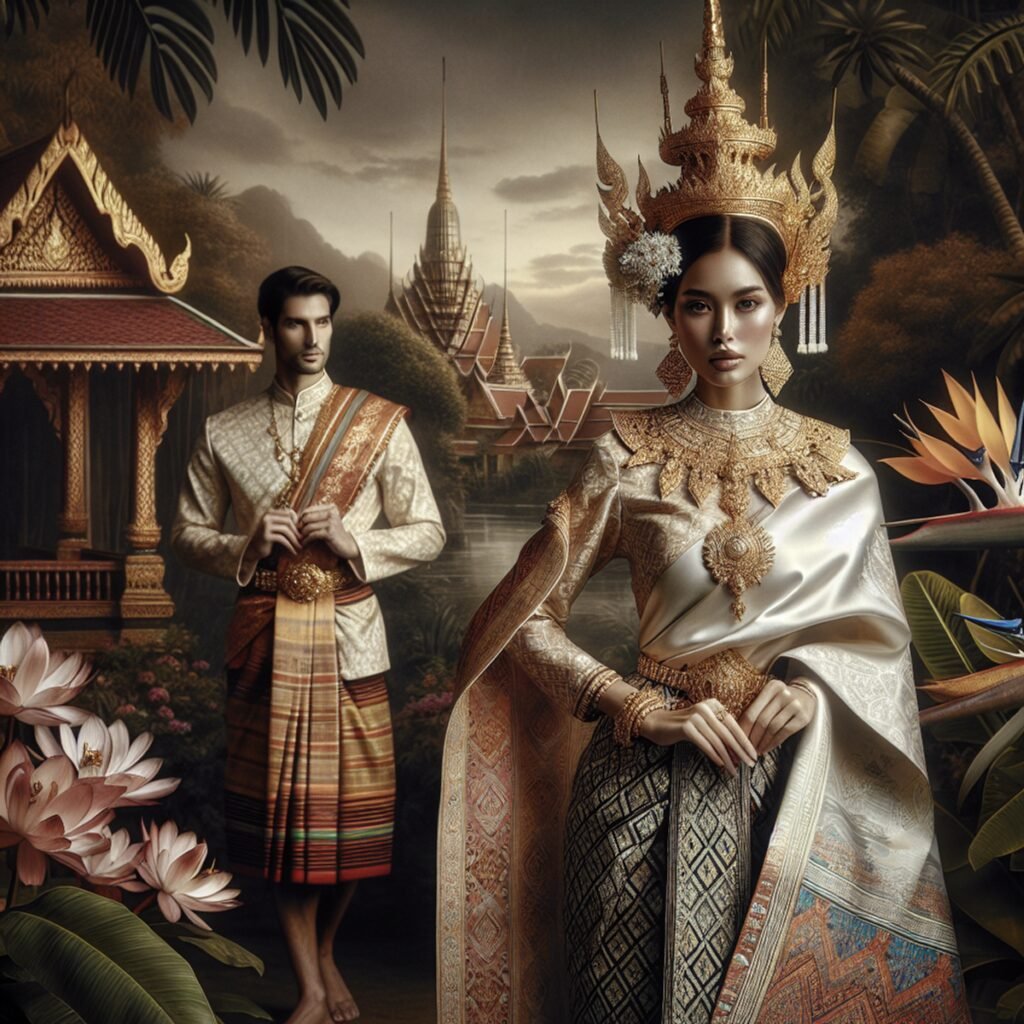
Traditional Thai clothing is not only characterized by its elegant style and intricate craftsmanship but also by its regional diversity. Different regions of Thailand have their own unique weaving traditions and indigenous fabrics, which contribute to the rich tapestry of Thai textile arts. Here are some key points to consider:
Batik-Patterned Sarongs from the South
In the southern region of Thailand, batik-patterned sarongs are highly prized for their vibrant colors and delicate designs. Batik is a traditional dyeing technique where wax is applied to fabric before dyeing, creating intricate patterns. The influence of Indian trade can be seen in these textiles, as Indian merchants introduced the art of batik to the region.
Intricate Silk Creations from the Northeast
The northeastern region of Thailand is renowned for its exquisite silk creations. Silk weaving has a long history in this area, with techniques passed down through generations. The intricate motifs and vibrant colors found in northeastern silk textiles often draw inspiration from Khmer culture, showcasing a fusion of Thai and Cambodian influences.
The cultural influences on Thai textiles extend beyond just patterns and techniques. They also encompass ornamental details and specific local styles:
- Throughout history, Thailand has had strong cultural and trade connections with India. This influence can be seen in the textile patterns used in different regions of Thailand. For example, Indian-inspired paisley motifs can be found in some Thai textiles, adding a touch of exotic elegance.
- The Khmer Empire once ruled over parts of present-day Thailand, leaving behind a lasting impact on Thai culture and art. In Thai traditional clothing, you can find ornamental details that reflect Khmer inspirations. Elaborate headdresses and intricate embroidery are just some examples of the Khmer influence on Thai textile arts.
The regional diversity in Thai textiles and designs adds depth and variety to the country’s traditional clothing. It showcases the rich cultural heritage of Thailand and highlights the creative expressions of different regions. Whether it’s the batik sarongs of the South or the silk creations of the Northeast, each region has its own distinct style that contributes to the timeless elegance of Thai traditional attire.
Preserving Heritage Through Fashion: The Queen Sirikit Museum of Textiles
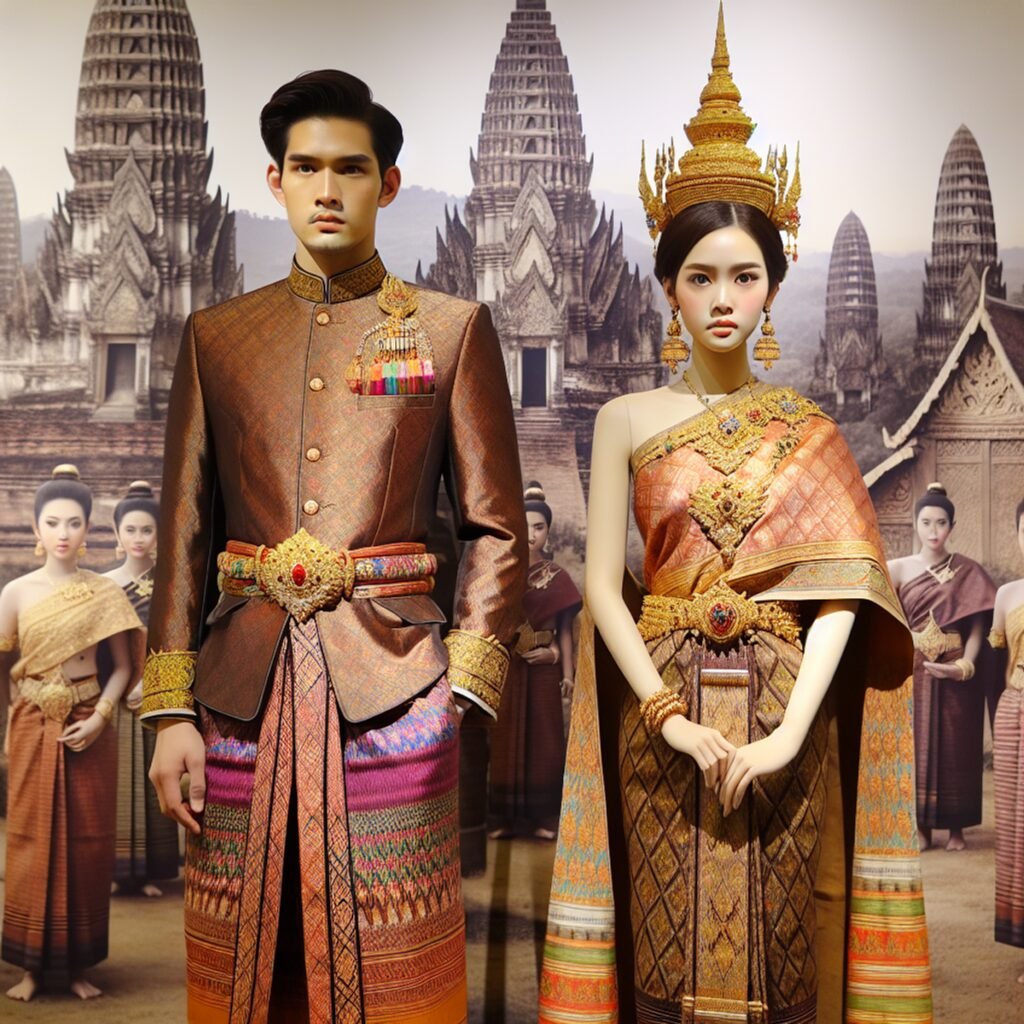
The Queen Sirikit Museum of Textiles is a prestigious institution dedicated to Thai textile arts and plays a pivotal role in safeguarding traditional craftsmanship. The museum’s curated collections of traditional Thai clothing serve as living testaments to the country’s rich cultural heritage, showcasing the exquisite artistry and historical significance behind each garment.
Here’s how the museum fulfills its mission:
- Preserving Thai Textile Arts: The museum is committed to preserving and celebrating the rich legacy of Thai textile arts.
- Guardian of Traditional Craftsmanship: It serves as a guardian of traditional craftsmanship, ensuring that the intricate techniques and designs are passed down through generations.
- Exploring Diverse Styles: The museum’s curated collections offer a captivating glimpse into the diverse styles and historical influences that have shaped traditional Thai clothing over the centuries.
- Honoring Cultural Significance: Through its preservation efforts, the museum not only honors the artistic mastery of the past but also educates and inspires present and future generations about the cultural significance inherent in each exquisite piece.
By exploring the remarkable exhibits at the Queen Sirikit Museum of Textiles, visitors can gain a profound appreciation for the timeless elegance and enduring beauty encapsulated in Thai traditional attire.
Revitalizing Thai Traditional Attire for Contemporary Wear
In today’s fashion landscape, Thai traditional clothing continues to hold relevance and captivate fashion enthusiasts around the world. Efforts are being made to reinterpret heritage techniques through sustainable and inclusive approaches, ensuring that Thai traditional attire remains a vibrant part of contemporary wear. Here are some key points to consider:
1. Sustainable Fashion Practices
Designers are incorporating sustainable practices into the creation of Thai traditional clothing. This includes using eco-friendly materials like organic cotton or natural dyes made from plant extracts. By embracing sustainability, traditional Thai attire becomes not just a cultural expression but also a way to support ethical and environmentally conscious fashion, which in turn has a positive impact on local communities and artisans involved in the production process.
2. Innovative Designs
Traditional Thai clothing is being reimagined with modern twists and innovative designs. Designers are experimenting with different silhouettes, prints, and embellishments while still honoring the essence of the original garments. The result is a fusion of tradition and contemporary aesthetics, creating unique pieces that appeal to a wider audience.
3. Cultural Appreciation
Embracing Thai traditional attire allows individuals to connect with Thai culture and show appreciation for its rich heritage. By wearing these garments with respect and understanding their origins, people can become ambassadors of cultural diversity and foster cross-cultural appreciation, further strengthening the bond between different communities and promoting inclusivity.
By revitalizing Thai traditional attire for contemporary wear, we ensure that this timeless elegance continues to thrive in the modern world. It offers an opportunity for people to engage with cultural traditions while exploring their own personal style. Whether it’s attending formal events or incorporating elements into everyday outfits, Thai traditional clothing allows individuals to make a fashion statement that celebrates both the past and the present.
Conclusion
Embrace the vibrant world of Thai traditional clothing, where timeless elegance meets enduring appeal. Experience firsthand the rich cultural heritage woven into each exquisite garment. Take the next step in your journey to explore and support Thai traditional attire.
Suggested Next Steps
- Discover reputable stores offering traditional Thai clothing.
- Explore online platforms featuring a wide selection of authentic attire.
- Engage in educational workshops to learn more about the intricate artistry behind Thai traditional clothing.
FAQs (Frequently Asked Questions)
What are the key highlights of traditional Thai clothing?
Traditional Thai clothing is not only visually stunning, but it also holds significant cultural value. This includes historical influences, regional variations, and its contemporary relevance in today’s society.
Can you describe the exquisite women’s traditional clothing in Thailand?
Women’s traditional clothing in Thailand includes elegant elements such as pha nung, chong kraben, blouse, and sabai. Each component has its own significance and plays a role in cultural celebrations and formal events.
What are the distinct features found in men’s traditional Thai clothing?
Men’s traditional Thai clothing showcases a blend of regal aesthetics and practicality, with key garments like suea pat, raj pattern, pants, and knee-length white socks. The evolution of men’s fashion in Thailand maintains a strong connection to its sartorial heritage.
How has Thai traditional attire evolved over time?
Thai traditional attire has evolved from opulent past styles to present-day adaptations for modern lifestyles. The Rattanakosin era has had a significant influence on the development of iconic silhouettes and decorative motifs.
What are some examples of regional diversity in Thai textiles and designs?
Thai textiles and designs showcase unique weaving traditions and indigenous fabrics across different regions of Thailand. Examples include batik-patterned sarongs from the South and intricate silk creations from the Northeast, influenced by Indian trade and Khmer culture.
What is the role of the Queen Sirikit Museum of Textiles in preserving traditional Thai clothing?
The Queen Sirikit Museum of Textiles is dedicated to safeguarding traditional craftsmanship and serves as a prestigious institution for Thai textile arts. It houses curated collections of traditional Thai clothing as living testaments to the country’s rich cultural heritage.
How is Thai traditional attire being revitalized for contemporary wear?
Efforts to revitalize Thai traditional attire for contemporary wear include sustainable fashion practices, innovative designs, and a focus on cultural appreciation. This aims to reinterpret heritage techniques through sustainable and inclusive approaches.
How can readers explore and support the world of Thai traditional clothing?
Readers are encouraged to explore the vibrant world of Thai traditional clothing firsthand to experience its timeless elegance and enduring appeal. Resources for purchasing or learning more about Thai traditional attire are available through reputable stores, online platforms, and educational workshops.
